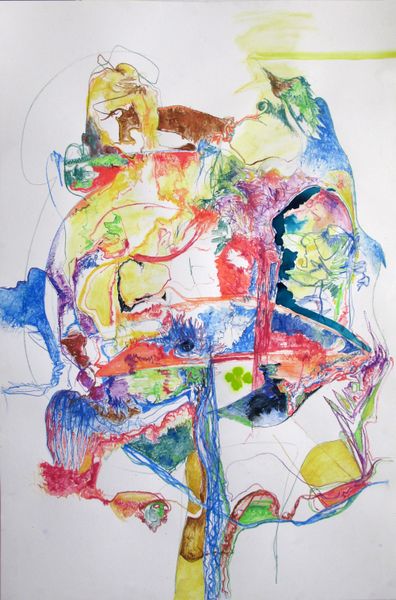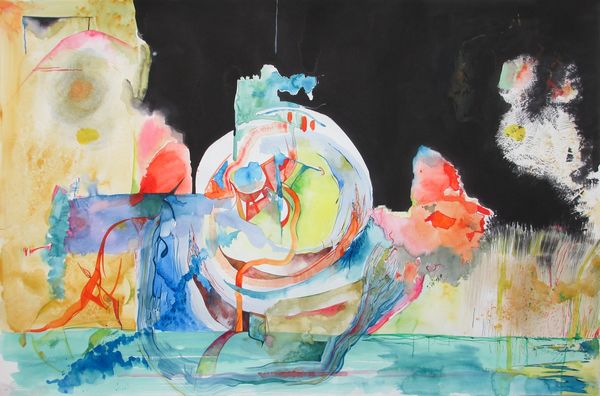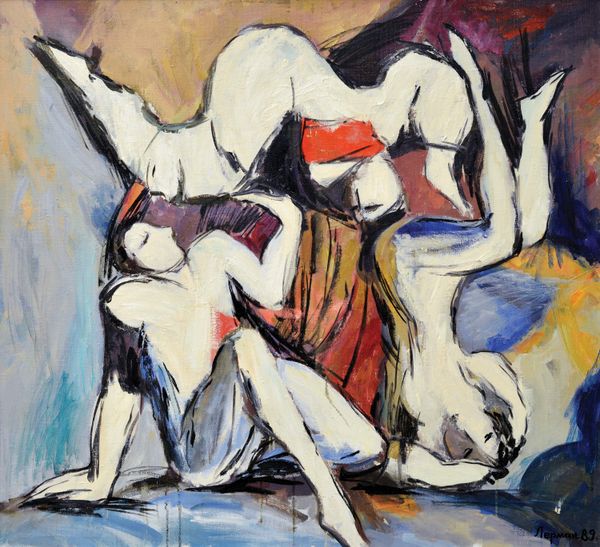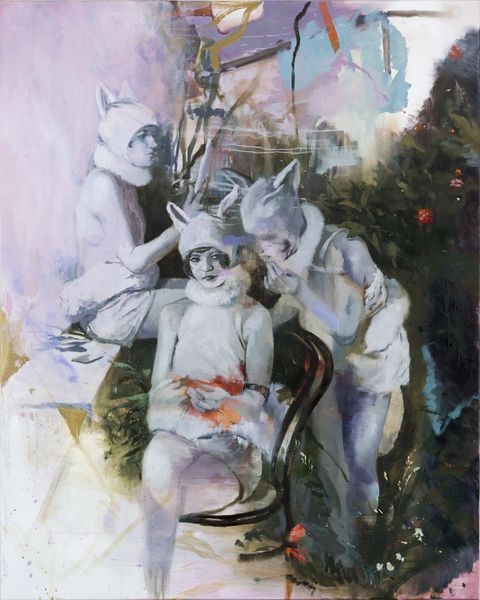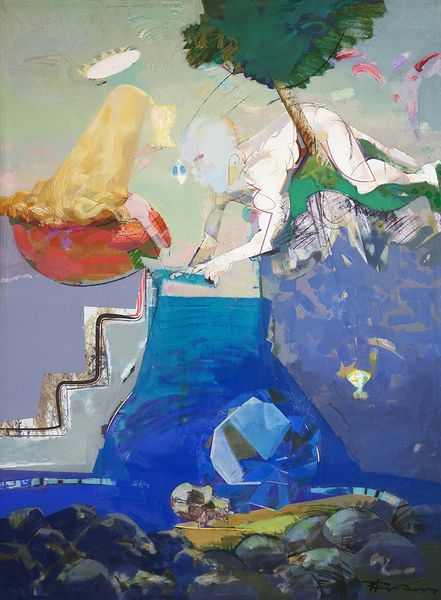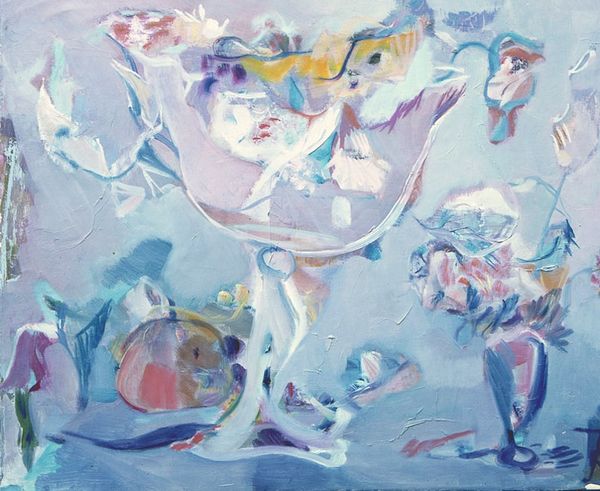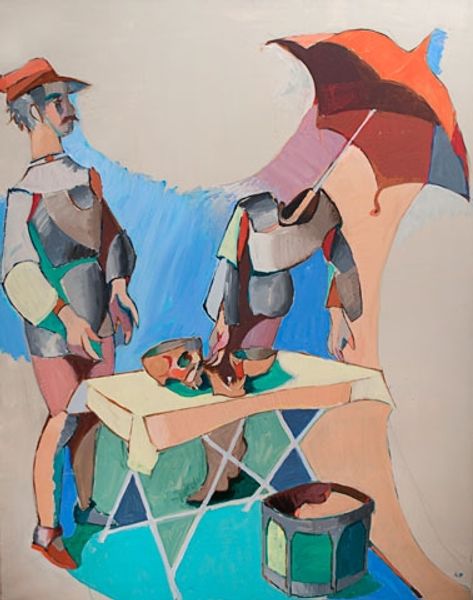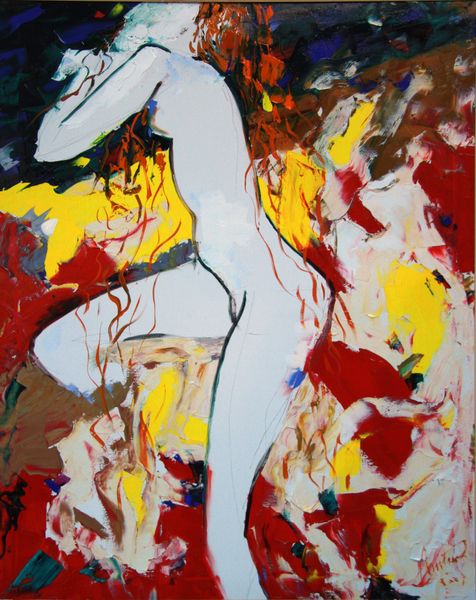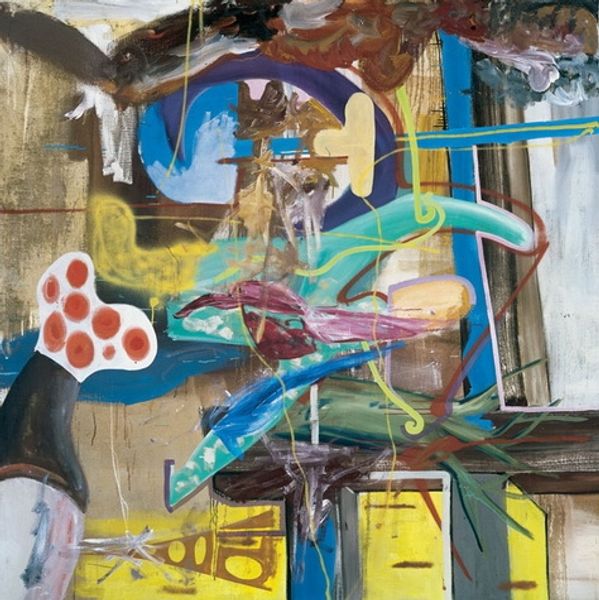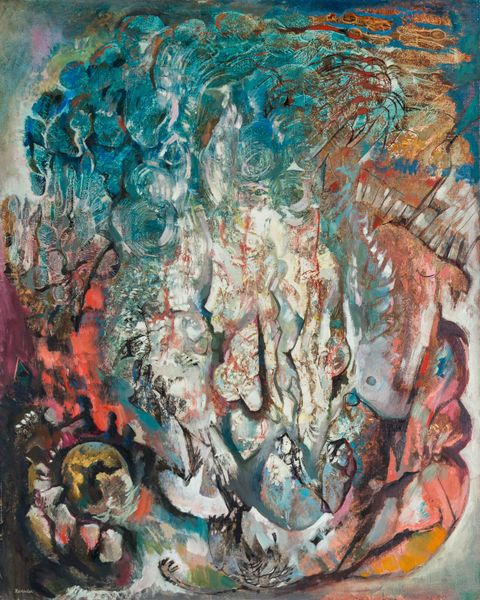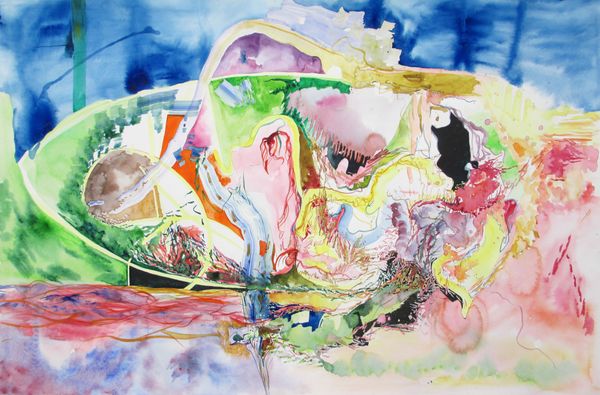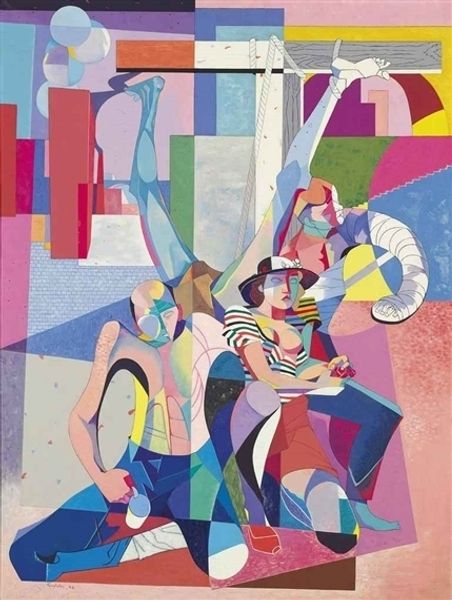
Dimensions: support: 2127 x 1647 mm
Copyright: © Estate of Peter de Francia | CC-BY-NC-ND 4.0 DEED, Photo: Tate
Editor: This is Peter De Francia's "Disparates (Omnia Vincit Amor)." It's undated, but the scale is impressive, over two meters tall. There’s a lot happening, it feels almost dreamlike, or maybe nightmarish. What do you make of it? Curator: It's a provocative composition. Note the classical bust juxtaposed with the animalistic mask and the title which translates to "Love Conquers All." De Francia seems to be dismantling traditional notions of power and beauty. How do you interpret the gender dynamics at play? Editor: It's unsettling, isn't it? I see a potential critique of the male gaze and the objectification of women, especially with the fragmented female form. Curator: Precisely. And consider the social context. De Francia was deeply engaged with political activism. Could this be a commentary on societal imbalances and the distorted roles we are forced to play? Editor: I hadn’t thought about it that way. It's much more than just a strange image. Curator: Art often serves as a mirror, reflecting and challenging the power structures around us.
Comments
tate 8 months ago
⋮
http://www.tate.org.uk/art/artworks/de-francia-disparates-omnia-vincit-amor-t04140
Join the conversation
Join millions of artists and users on Artera today and experience the ultimate creative platform.
tate 8 months ago
⋮
This modern satire takes its title from the group of 'Disparates' prints by Goya, and is one of a series of works by de Francia of this title, most of them drawings. Many point bitterly to the savagery and hypocrisy of political life. Here he mocks the deceptions of lust, as the woman is not as beautiful, nor the man as heroic, as they pretend. De Francia is one of the few British artists who have confronted such subjects continuously since the war. His style of drawing is narrative but in the Expressionist tradition, in which the image may be distorted or rearranged to create the effects the artist seeks. Gallery label, August 2004
